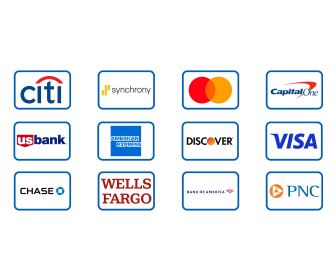Ultimate Comparison: Fixed Annual Fee vs. No Fee Credit Cards
Choosing the right credit card often comes down to one major question — should you pay an annual fee or not? Some cards are free to hold, while others charge anywhere from $95 to $695 a year, promising better rewards and travel perks. The real question is: do those benefits actually outweigh the cost? Let’s dive into a 2025 breakdown comparing fixed annual fee vs. no-fee credit cards and which option suits your spending style best.
1. Why No-Fee Credit Cards Appeal to Most People
No annual fee credit cards are the simplest and safest way to build credit. They charge nothing to keep open and usually offer straightforward cash-back rewards. Perfect for anyone starting their credit journey or those who prefer to minimize ongoing costs.
- Pros: Free to keep, helps build credit history, and lets you hold multiple cards without worrying about breaking even on a fee.
- Cons: Lower rewards rates and fewer premium perks like travel insurance, extended warranties, or lounge access.
Examples (2025): The Citi® Double Cash gives 2% cash back (1% when you buy, 1% when you pay). The Chase Freedom Unlimited® earns 1.5% back on all purchases plus 3% on dining — with no annual fee at all.
2. Why Some Cards Charge an Annual Fee — and Why It Can Be Worth It
Cards with annual fees often include valuable benefits that can offset the cost — if used strategically. They target frequent travelers, heavy spenders, or those who want premium experiences like airport lounge access, statement credits, or better customer support.
- Pros: Higher rewards rates, premium perks, and bonus credits (Uber, streaming, hotel stays, etc.).
- Cons: You must spend enough or redeem perks effectively to make the fee worthwhile.
Examples (2025): The American Express® Gold Card ($250 annual fee) offers 4x points at restaurants and 3x on flights. The Chase Sapphire Preferred® ($95 annual fee) earns 2x on travel and 3x on dining, plus trip protections and transfer partners. For frequent users, these perks can easily exceed the yearly cost.
3. Doing the Math: When a Fee Pays for Itself
To find out whether a fixed annual fee is worth it, calculate your break-even point — the spending level where your rewards outpace the cost of the card.
Example: A no-fee card earns 1.5% back, while a $95 annual-fee card earns 2.5%. You’d need to spend around $9,500 per year to break even ($9,500 × 1% = $95). Spend more, and the annual-fee card wins. Spend less, and the free card saves you money.
Tip: Don’t just look at total spending — check your main categories. If a card rewards travel and dining but you mostly spend on groceries and gas, it may not justify the fee.
4. Hidden Perks That Can Tip the Scale
Many annual-fee cards include benefits that don’t show up in your cash-back math but still save real money: trip insurance, purchase protection, and even TSA PreCheck credits. A single delayed-flight reimbursement could equal a year’s fee.
- Frequent travelers: Benefit most from premium perks and protections.
- Casual spenders: Usually save more with no-fee cards and long-term simplicity.
5. The Smart Hybrid Setup
You don’t have to pick one side. Many people keep one premium rewards card and one no-fee backup. Use the premium card for travel and dining, and the no-fee card for daily purchases — keeping costs low while still earning strong rewards.
Example: Combine the Chase Sapphire Preferred® for travel rewards with the Freedom Unlimited® for everyday use. You’ll earn flexible points under one ecosystem without paying multiple annual fees.
Expert insight: A high-fee card isn’t “better” by default — it’s only worth it if you actually use what you’re paying for. Review your spending, calculate value, and never assume perks will automatically offset the fee.
Final Thoughts
There’s no one-size-fits-all answer to the annual fee debate. If you travel frequently, dine out often, or love using card credits, a fee-based card can deliver strong long-term value. If you prefer simplicity and zero maintenance, a no-fee card may quietly win. The real trick is to align your card strategy with how you actually spend — not with marketing promises.
Not financial advice. Rewards programs, perks, and fees vary by issuer and may change without notice. Always read the most recent terms before applying or renewing any card.



